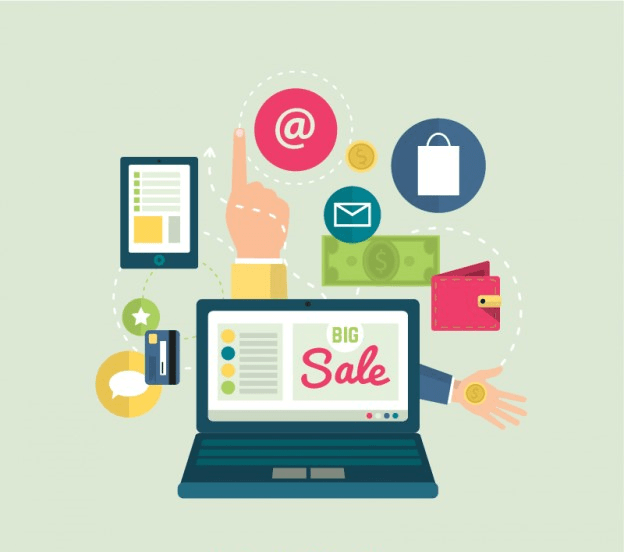How a online sales can be better alternative than retail sales?

Introduction
In the ever-evolving landscape of commerce, the debate between online sales and traditional retail has intensified. While brick-and-mortar stores once reigned supreme, the digital revolution has shifted consumer behavior dramatically. Today, online sales are not just a trend—they’re a strategic advantage. Here’s why embracing e-commerce might be the smarter move for businesses and customers alike.
1. Unlimited Accessibility and Convenience
Online shopping obliterates the constraints of time and location. Customers can browse, compare, and purchase products 24/7 from the comfort of their homes, without battling traffic, long queues, or limited store hours. For businesses, this means capturing sales even outside traditional working hours. A retail store might close at 9 PM, but an online store never sleeps—turning weekends, holidays, and midnight browsing sessions into revenue opportunities.
Forget geographical barriers: A small artisan brand in Bali can sell to a customer in Berlin with a few clicks. Retail, by contrast, relies on foot traffic and local demographics.
2. Lower Overhead Costs
Running a physical store demands significant investment: rent, utilities, staffing, and maintenance. Prime locations come with exorbitant price tags, squeezing profit margins. Online businesses, however, operate with leaner budgets. E-commerce platforms, digital marketing, and remote teams drastically reduce operational costs. These savings often translate to competitive pricing for customers, creating a win-win scenario.
Even for hybrid models (click-and-mortar), shifting focus online minimizes reliance on expensive retail spaces.
3. Hyper-Personalized Shopping Experiences
Data is the fuel of online sales. AI-driven tools analyze customer behavior, preferences, and purchase history to deliver tailored recommendations, discounts, and ads. Imagine a returning visitor being greeted with a curated list of products they’ll love—this level of personalization is hard to replicate in a retail setting.
Retail employees might remember a loyal customer’s name, but algorithms remember their entire shopping journey.
4. Scalability Without Limits
Expanding a retail business requires opening new stores, hiring more staff, and managing complex logistics. Online sales, however, scale effortlessly. A surge in demand? Simply upgrade server capacity or automate order fulfillment. Platforms like Shopify or WooCommerce empower businesses to grow globally without the overhead of physical expansion.
For startups and SMEs, this scalability lowers the barrier to entry, enabling them to compete with established giants.
5. Data-Driven Decision Making
E-commerce platforms provide real-time analytics: Which products are trending? Where do customers abandon carts? What’s the conversion rate for a specific ad campaign? This data goldmine lets businesses optimize strategies on the fly. Retailers, meanwhile, rely on guesswork or delayed sales reports to gauge performance.
With tools like Google Analytics and CRM systems, online sellers refine their marketing, inventory, and customer service with surgical precision.
6. Eco-Friendly and Flexible Options
Sustainability matters to today’s consumers. Online sales reduce the carbon footprint associated with commuting to stores and operating large retail spaces. Plus, innovations like virtual try-ons (for apparel or cosmetics) and digital receipts minimize waste.
Flexible delivery options—same-day shipping, curbside pickup, or subscription models—also cater to modern lifestyles better than rigid retail frameworks.
7. Global Reach, Local Impact
An online store turns every internet user into a potential customer. Social media ads, SEO, and influencer partnerships can catapult a niche product to viral fame. Retailers, on the other hand, depend on local visibility and word-of-mouth.
Even small businesses can build global communities through platforms like Etsy or Amazon, while retail chains struggle to match that reach without massive investment.
Challenges? Solutions Exist
Critics argue that online sales lack the “human touch” of retail. But live chat support, AR-powered product previews, and personalized video messages bridge this gap. Logistics hurdles? Third-party fulfillment centers and dropshipping models streamline operations.
The Future Is Digital (But Retail Isn’t Dead)
Retail isn’t disappearing—it’s adapting. Brands like Warby Parker and Apple thrive by blending immersive in-store experiences with robust online ecosystems. However, for most businesses, prioritizing online sales offers agility, cost efficiency, and access to a borderless market.
Conclusion
The rise of online sales isn’t just about technology—it’s about meeting customers where they are. In a world valuing speed, convenience, and personalization, e-commerce isn’t just an alternative to retail; it’s the future. Partnering with a forward-thinking mobile app development company can empower businesses to capitalize on this shift, offering seamless shopping experiences tailored to on-the-go consumers. Businesses that embrace this digital transformation, whether through intuitive apps or omnichannel strategies, will not only survive but thrive in the digital age.
 Healthcare
Healthcare  Education
Education  Real Estate
Real Estate  Logistic
Logistic  Themes
Themes
 Plugins
Plugins
 Patterns
Patterns





